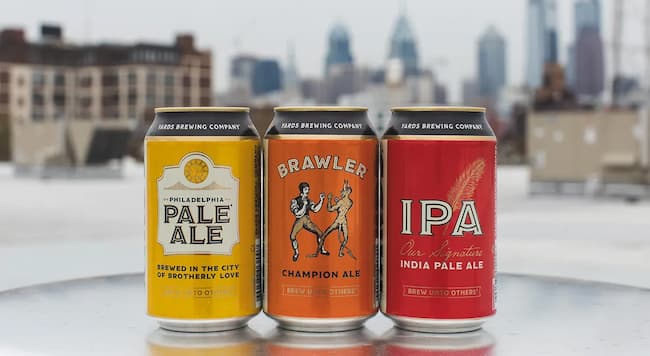Have you ever wondered what is a 16 oz beer can called? Well, the answer might surprise you. Most people refer to this size of a beer can as a “regular can” or just a “can”, but there are other terms that have been used over time.

In this article, we’ll explore the various names of 16 oz beer cans and their history. We’ll also look at why some brewers choose to use larger cans than others and how they affect our drinking experience. So sit back, grab yourself an ice-cold pounder, and join us on our journey to know what is a 16 oz beer can called.
What is a 16 OZ Beer Can Called?
A 16 oz beer can is most commonly referred to as a “pounder” or a “tallboy.” This name originates from the fact that this size beer can contains 16 ounces, which is equivalent to one pound. Other terms that have been used include “stubby” and “pony” due to their shorter stature compared to other beer cans.
The 16 oz can is also sometimes referred to as a “40” due to the fact that it contains 40 ounces of beer overall (including the headspace) when filled. The most commonly used cans are 16 oz and 12 oz, with 16 oz cans have become increasingly popular in recent years. The term “pounder” is usually used as a reference to the fact that 16 ounces of beer equal one pound in weight.

This is largely due to the fact that some brewers choose larger cans for their beers as it allows them to showcase more of their beer’s flavor and character. Additionally, 16 oz cans are also more cost-effective for brewers than the smaller 12 oz cans which can offset the cost of production.
Why Do Brewers Use 16 OZ Beer Cans?
Brewers choose to use 16 oz cans for a variety of reasons. The larger size allows the beer to be more easily shared with friends, as each person can typically have two cans of the same amount. It also allows for more headspace in the can, which helps keep the carbonation and flavor of the beer intact.
Finally, it gives breweries more flexibility when designing their labels since they are able to fit more information onto the can. See how many ounces in a can of beer are generally available on the market.
Do You Call 16 Oz Cans Pounders or Tallboys?
16 oz. cans are typically called either a “pounder” or a “tallboy.” The term “pounder” is most commonly used as it references the fact that 16 ounces of beer equal one pound in weight. There are other terms that have been used, such as “stubby” and “pony,” but these are less commonly used.
How Do 16 OZ Beer Cans Affect Our Drinking Experience?
When it comes to drinking beer, size matters. The larger 16 oz cans allow for more headspace in the can, which helps keep the carbonation and flavor of the beer intact. This creates a smoother, fuller flavor that isn’t often found in 12 oz cans.
It also allows for more beer to be consumed per can, which can be beneficial if you’re sharing with friends. The larger cans also give breweries more flexibility when designing their labels, as they are able to put more information on the can than would otherwise be possible.
Is 16 oz a pint?
Yes, 16 ounces is equal to one pint. This is because a pint contains two cups of liquid and each cup is 8 ounces, thus making one pint 16 ounces. The 16 oz beer can is an important piece of the beer-drinking experience. Not only does it contain more beer than the 12 oz cans, but it also provides a smoother, fuller flavor due to the increased headspace.
Additionally, brewers are able to showcase more of their beer’s character and design on a larger can. The 16 oz beer can is commonly referred to as a pounder or tallboy and has been an integral part of the beer-drinking experience for years.
Conclusion
The answer to what is a 16 oz beer can called is “pounders” or “tallboys.” Their larger size allows for more flexibility when it comes to sharing beers with friends and helps keep the carbonation and flavor of the beer intact. Whether you choose a “pounder” or a “tallboy,” 16 oz beer cans can make for a great drinking experience. Cheers! Have a question? Drop it in the comments below. Our Chillbeer.net team will get back to you with an answer.